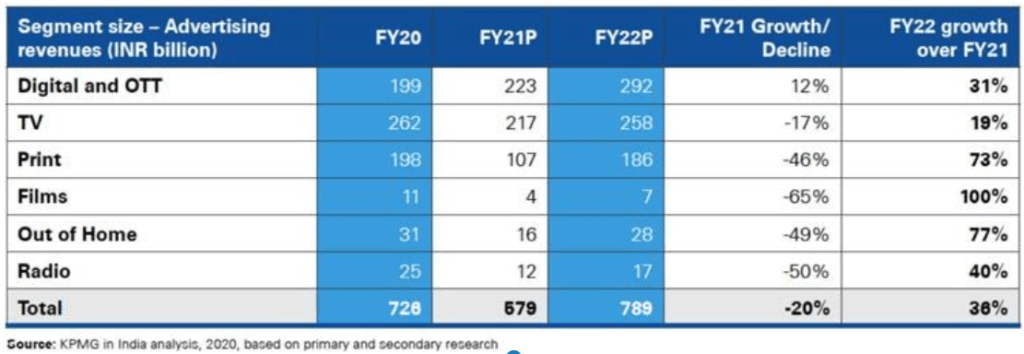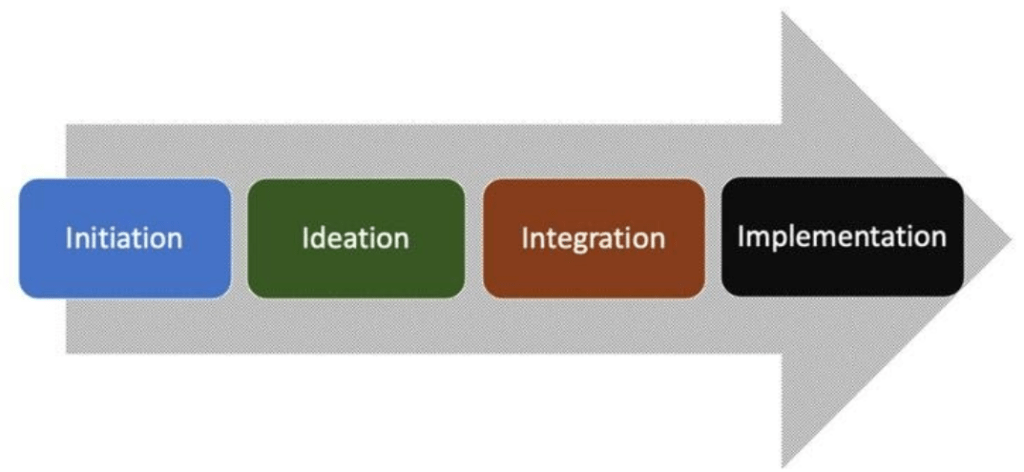During the first nine months of 2020, due to the COVID-19 pandemic, most media organisations are facing unprecedented challenges — especially those focussed on print, radio, and out-of-home (OOH). This pandemic is appearing as a long, unending tunnel, and companies don’t see an end to it.
According to the KPMG September 2020 media report, during 2020, new digital and over-the-top (OTT) media will surpass the well-established print media and, in 2021, the television media.

The next obvious question is how traditional media can address this new challenge, especially during this unprecedented time with its unprecedented challenges.
With changing times, the media industry and its core competency of producing quality content feels an urgent need to retain its readers and revenues that are slipping away to digital, OTT, and technology establishments. In such a scenario, the established media houses need to consider if they should continue to focus on their current core competency or if they need to develop new core competencies to retain their edge.
In the second question relevant to this discussion is if there is an alternative approach to addressing the challenges. Organisations need to recognise the world is changing, and simply re-engineering the current business model will not work in the long run.
Media organisations need to understand how customers, technology, competition, and demographic shifts are changing — and adopt changes in tune with those requirements.
Therefore, media houses need to reconsider the current situation and work toward innovation that will provide the solution to face this challenge. To understand the importance of innovation, we can look at examples of hyper-successful companies like Nokia or Kodak.
Both companies lost their edge and missed the moment when they stuck to their successful business models, which kept them busy managing the daily business and serving current clients instead of envisioning future opportunities. Therefore, they missed out on radical innovation.
To understand the meaning of the term innovation, we need to first bust some misconceptions about innovation. First, innovation does not merely mean ideas nobody has had before. It is also not true that big success requires big resources. Finally, innovation breakthroughs are not always based on fascinating technologies.
Innovation is a process that either increases the customer value or lowers product cost and thereby creates a competitive advantage. Any effective business model premised on innovation has certain crucial building blocks that are its key focus. These are:
- Who are our target customers?
- What is our offer?
- How can we create a value proposition?
- How we can generate revenue out of it?
Next, we need to know the process of the business model innovation. One of the established models is the 4I-framework of business model innovation, proposed by K. Frankenberger, Tobias Weiblen, Michaela Csik, and Oliver Gassmann in their famous research paper published in the International Journal of Product Development in January 2013.
This business model innovation framework has four steps:
- Initiation (requires critical analysis of our current business model).
- Ideation (focuses on the new business model and patterns).
- Integration (check the consistency of the business model and organisational fit).
- Implementation (build a business pilot, A/B testing, and, if required, return to the design board).

It is worth mentioning that innovation is important, but the speed of innovation holds the key. The innovation process is quite a complex process. When organisations are handling the entire process, including evaluating their projects on technical and business merits, very limited ideas emerge from the project development funnel and at a very slow pace, which hardly makes any impact in today’s fast-moving world.
For example, during October 2001, the U.S. Postal Service was under threat due to an anthrax attack. As a result, many of its workers were affected and a few died.
The company’s core competency was providing secure metering systems and not related to addressing this biological problem. The company made a quick decision and invited help from outside industries for a fast and effective solution. Within a very limited time, multiple promising solutions were shortlisted. Selected ideas were quickly introduced in the form of a new product that secured business from this bioterrorism attack.
Thus, we need to think about innovation in terms of the open-market innovation approach, which can help organisations address this limitation. Organisations also need to open to sources outside of the organisation.
With open-market innovation, an organisation starts looking for new ideas and opportunities beyond a company’s boundaries with tools like strategic alliances, licensing, and joint ventures. For this kind of innovation, expertise may come from many fields like technology, processing, management, designing, law, licensing, patents, and venture capital.
Organisations need to accept that innovation is different from creativity. Innovation is a business model of creativity, requiring structured efforts through collaboration. Thus, in the case of an individual organisation functioning inside its solid walls of the product development funnel, the open-innovation funnel imbibes new ideas from outside organisations, providing ample opportunities for fast and effective business model innovation.
However, there are some misconceptions in terms of the risks posed due to working in an open environment and sharing ideas. That is not completely true as any innovation transfers take time, and other organisations may never be able to decode the full value of innovation.
Thus, we can say that open-market innovation is currently an excellent strategy on account of its quality, speed, and minimal investments.
The Indian news media can consider this strategy as the best bargaining chip in value extraction. We must take pride in collaboration and partnering for effective and faster value creation.
This article was originally published at INMA’s official website on 26th October, 2020.
This is a guest post by Sushil Kumar Tyagi. He is General Manager of Marketing at Ushodaya Enterprises Private Limited (Eenadu Group) in Delhi, India. Sushil can be reached at sushiltyagi@eenadu.net or @SushilKumarTyag.

Shubham is a digital marketer with rich experience working in the advertisement technology industry. He has vast experience in the programmatic industry, driving business strategy and scaling functions including but not limited to growth and marketing, Operations, process optimization, and Sales.







